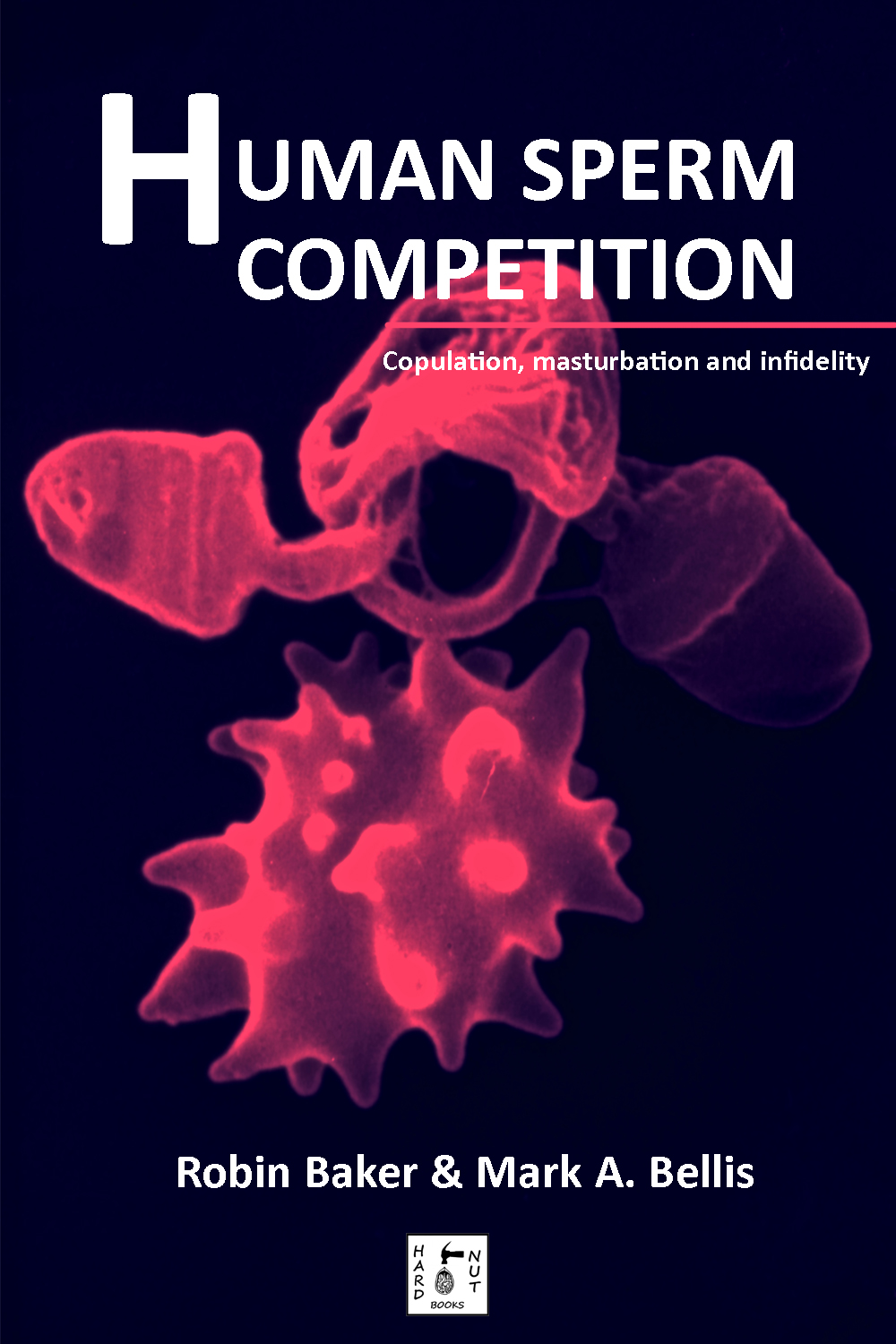| PRAISE here CRITICISM (coming soon) |
-OR-
Hover the mouse cursor above book cover to see publisher, date of publication, and ISBN; click a country to go to an online bookseller
Available in all digital formats: Kindle, Apple i-devices, Nook Book, and more)
| English | |||
 |
USA . UK . Canada |
Since the 1970s, behavioural ecologists and evolutionary biologists have been fascinated by the biological implications of sperm from different males competing for fertilization of the egg in the female reproductive tract. But until Human Sperm Competition there had never been a discussion of the phenomenon for the human species in book form, despite its relevance for a full understanding of human reproduction. |
| Over the years, Human Sperm Competition has become a classic in the study of human sexual biology – but although the original hardback is still in print rising costs plus perhaps its classic status have priced it beyond those students who might most wish to read its contents. This digital edition of the original 1995 publication, but at a student-friendly price, now solves this problem. . |
||
| The book is a pioneering analysis of the evolutionary biology of human sexuality, proposing that all aspects have been shaped by the phenomenon of sperm competition. Despite being written in 1993-94, the book’s contents are as relevant now as they were two decades ago. Perhaps even more so, because since Baker and Bellis’ demonstration that human sperm competition could actually be studied a number of research groups have taken up the challenge where they left off. Most of these groups have obtained results that build firmly upon Baker and Bellis’ original work. A few others created important dialogues. None though have destroyed any crucial part of the foundation first laid down in the 1995 book. But the main way in which Human Sperm Competition remains relevant to this day is that for various reasons – some cultural, some procedural, and yet others due to sheer opportunity – Baker and Bellis were able to do a number of experiments that others since have not had the opportunity to repeat. And the results of those unique experiments were presented in their book and nowhere else. . |
||
| In the first half of the book the authors explore the role of sperm competition in the evolution of human sexual characteristics, considering for example the architecture of the female reproductive tract, the reasons for male and female infidelity and the possible biological reasons for homosexuality, masturbation and orgasm. . |
||
| In the second half, the mechanism of sperm competition is evaluated in detail, together with the evidence for and the implications of the authors’ own Kamikaze Sperm Hypothesis. Human Sperm Competition sets out the thesis that adopting an evolutionary approach to human reproduction exposes the subtle and sophisticated ways in which human sexual anatomy, physiology and behaviour are designed to interact. As a species, understanding this sexual legacy helps explain how we reproduce today and why problems with fertility arise. . |

Recent Comments